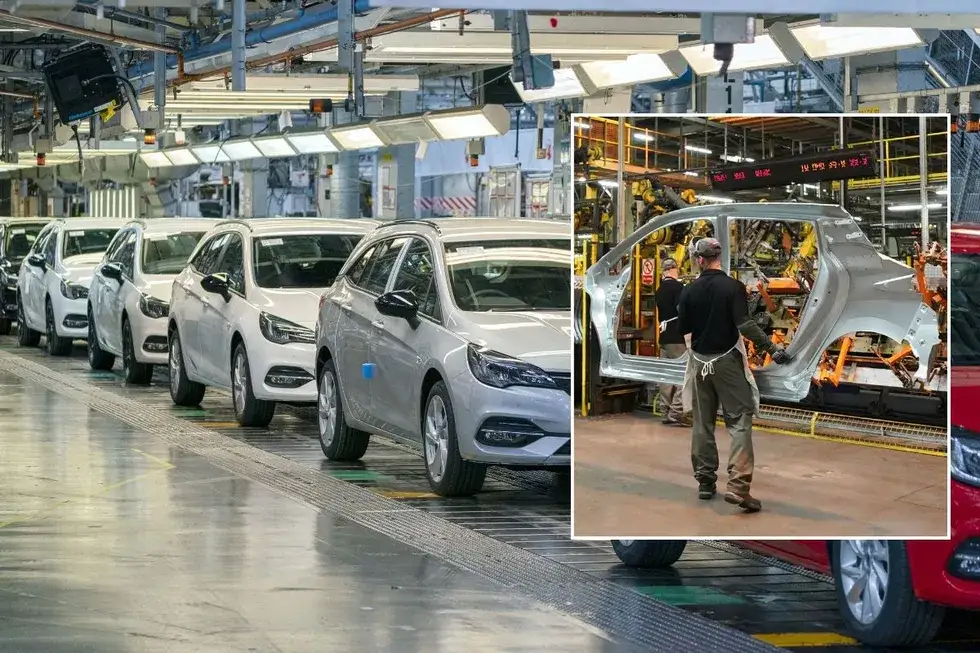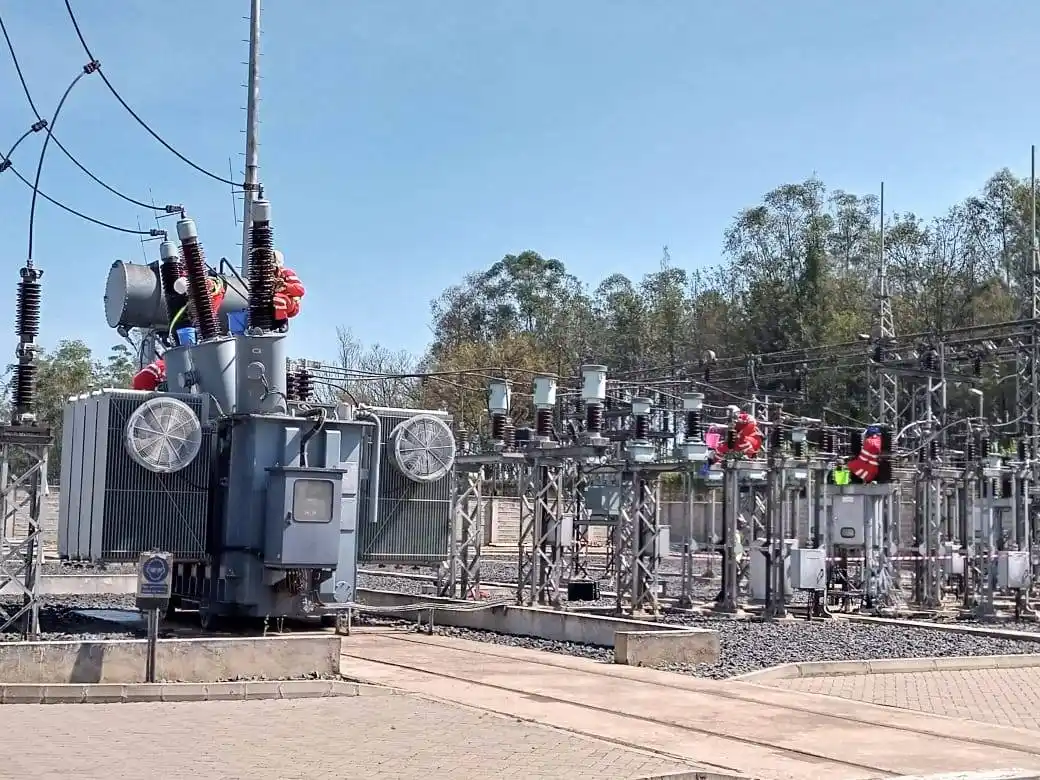The United Kingdom has today unveiled a landmark commitment to its automotive sector, launching the ambitious DRIVE35 programme. This initiative, backed by a substantial £2.5 billion investment over the next decade, is set to solidify the UK’s position at the forefront of zero-emission vehicle (ZEV) development, foster innovation, and secure thousands of high-value jobs across the nation.
The announcement, a cornerstone of the UK’s modern Industrial Strategy, specifically highlighted within the new Advanced Manufacturing Sector Plan, signals a robust, long-term vision for an industry undergoing its most profound transformation in a century. With £2 billion earmarked for funding competitions up to 2030 and an additional £500 million dedicated to research and development (R&D) through 2035, DRIVE35 provides the critical financial certainty and strategic direction needed for businesses to invest confidently in the UK’s green automotive future.
The Strategic Imperative: Why Zero-Emission Vehicles?
The global automotive industry is in the midst of an unprecedented shift, driven by urgent climate change targets, evolving consumer preferences, and fierce international competition. The transition from internal combustion engines (ICE) to zero-emission vehicles, primarily electric vehicles (EVs), represents not just an environmental imperative but a colossal economic opportunity. For the UK, embracing this transition is vital for maintaining its historical strength in automotive manufacturing, attracting new investment, and ensuring future prosperity.
Zero-emission vehicles encompass a range of technologies, including battery electric vehicles (BEVs), plug-in hybrid electric vehicles (PHEVs), and hydrogen fuel cell electric vehicles (FCEVs). Each of these pathways requires significant investment in new manufacturing processes, battery technology, charging infrastructure, and a highly skilled workforce. The DRIVE35 programme acknowledges this complexity by supporting a wide spectrum of projects – from the development of multi-billion-pound gigafactories essential for large-scale battery production, to nurturing innovative start-ups, prototyping cutting-edge technologies, and fostering advanced automotive R&D.
Gigafactories, sprawling facilities dedicated to the mass production of lithium-ion batteries, are the backbone of the EV revolution. Their presence is crucial for establishing a resilient domestic supply chain, reducing reliance on imports, and ensuring the competitiveness of UK-made EVs. By targeting these large-scale investments alongside smaller, agile innovators, DRIVE35 aims to cultivate a diverse and robust ecosystem capable of rapid adaptation and growth.
A Decade of Commitment: Deconstructing the £2.5 Billion Investment
The £2.5 billion commitment is structured to provide both immediate impetus and sustained support:
- £2 Billion for Manufacturing Competitions (to 2030): This substantial portion of the funding is designed to de-risk major capital investments in the UK. It will facilitate the establishment and expansion of manufacturing facilities for ZEVs, their components, and crucial supply chain elements. This includes support for the construction of gigafactories, the retooling of existing car plants for EV production, and the development of new assembly lines for electric motors, power electronics, and other essential parts. The long timeframe up to 2030 offers businesses the stability required for multi-year investment cycles, which are typical in large-scale manufacturing projects.
- £500 Million for Research & Development (to 2035): This dedicated R&D fund underscores the UK’s ambition to be a global leader in automotive innovation. It will fuel advancements in battery chemistry, energy density, charging speeds, lightweight materials, advanced manufacturing techniques, and autonomous driving technologies. Extending this funding to 2035 signals a commitment to long-term technological leadership, recognizing that the pace of innovation in the ZEV sector is relentless. This R&D investment will not only lead to new products but also to more efficient and sustainable production processes.
This dual approach ensures that the UK is not only building the capacity to manufacture current generation ZEVs but is also actively shaping the next generation of automotive technology.
Driving Economic Growth and Job Creation Across the UK
The automotive sector is a vital engine for the UK economy, contributing an impressive £21.4 billion in Gross Value Added (GVA) in 2024. This figure represents the value of goods and services produced by the industry, highlighting its significant contribution to the nation’s wealth. The sector currently employs 132,000 people across all parts of the UK, encompassing a wide array of roles from design and engineering to manufacturing, sales, and after-sales support.
A key focus of DRIVE35 is the creation and safeguarding of highly-skilled, highly-paid roles, and apprenticeships. The transition to zero emissions demands new skill sets in areas like battery technology, power electronics, software development for autonomous systems, and advanced robotics. The programme will support training initiatives and educational pathways to ensure the UK workforce is equipped for these future-oriented jobs, providing sustainable career opportunities for generations to come. This investment in human capital is as crucial as the financial capital for long-term success.
The government views the shift to zero emissions as “the biggest opportunity of the 21st century to attract investment, harness British innovation, and deliver growth for generations to come.” This is not merely about replacing petrol cars with electric ones; it’s about building a new industrial base that is resilient, environmentally sustainable, and technologically advanced, ensuring the UK remains competitive in the global economy.
The UK’s Leading Role in the EV Revolution
The UK has already demonstrated significant momentum in the EV market. In 2024, it emerged as the largest EV market in Europe and the third largest globally, with over 382,000 EVs sold – a remarkable increase of a fifth on the previous year. This rapid adoption is a testament to growing consumer confidence, supportive government policies, and an expanding charging infrastructure.
The availability of charging points is a critical enabler for EV adoption. With more than 82,000 public chargepoints now available across the UK, and one being added every half an hour, the network is rapidly expanding to meet demand. This extensive infrastructure reduces range anxiety and makes EV ownership a practical reality for more motorists. Continued investment in rapid charging networks and smart charging solutions will be essential to support the projected growth in EV sales.
Voices from the Industry: Leadership Perspectives
The announcement was met with strong endorsement from key figures, underscoring the collaborative spirit driving this initiative.
Business and Trade Secretary Jonathan Reynolds emphasized the government’s proactive approach: “We’re helping British carmakers get to the front of the pack by working hand in hand with investors to build a globally competitive electric vehicle supply chain in the UK as we deliver our Plan for Change. We’re taking action to back the industry for the future with the biggest set of announcements for the sector in the last decade.”
Reynolds highlighted several complementary measures:
- Landmark Trade Deal with the US: This agreement is crucial for reducing tariffs on British car manufacturers, making UK-produced vehicles more competitive in the lucrative US market. By lowering trade barriers, it incentivizes investment in UK production facilities that can serve a global customer base.
- Measures in the Modern Industrial Strategy to Lower Electricity Prices: Manufacturing, especially battery production, is highly energy-intensive. Reducing electricity costs directly improves the competitiveness of UK factories, making the UK a more attractive location for high-volume production. This aligns with broader government efforts to ensure energy security and affordability.
- Updating the ZEV Mandate: The ZEV mandate sets binding targets for the proportion of new cars and vans sold by manufacturers that must be zero-emission each year. Updating this mandate provides clarity and certainty for manufacturers, encouraging them to ramp up their ZEV offerings and production in the UK to meet these regulatory requirements.
Reynolds concluded, “Economic growth is our number one priority, and by funding our world-leading auto sector we are creating the right conditions for increased investment, bringing growth, jobs, and opportunities to every part of the UK.”
Mike Hawes, Chief Executive of the Society of Motor Manufacturers and Traders (SMMT), underscored the strategic importance of DRIVE35: “The creation of this dedicated automotive programme is further evidence of the sector’s importance to economic growth. Delivered as part of the Industrial Strategy, DRIVE35 has the potential to unlock investment and innovation in the UK, supporting jobs and creating wealth across the country.” Hawes also pointed to the challenges facing the sector, including “geopolitical uncertainty and fierce global competition,” which make a “long term, cross-government strategy with specific measures for automotive” indispensable. These challenges include supply chain vulnerabilities, rising raw material costs, and intense competition from established automotive giants and emerging players, particularly from Asia.
Ian Constance, CEO of Advanced Propulsion Centre UK (APC UK) and Zenzic, praised the government’s commitment: “This new investment underlines the commitment from Government to secure advanced manufacturing in the UK. I am pleased that the APC, Zenzic, and its delivery partners are here to facilitate a new wave of funding in the automotive industry, supporting innovation, driving scale-up, and enabling transformation.” He highlighted the diverse nature of the grants, supporting “rapid development of demonstrators featuring cutting-edge technology, accelerate ambitious SMEs, and support vital collaborative R&D innovation,” all contributing to the UK’s reputation as a world-leader in automotive technology.
Building on a Strong Foundation: The Legacy of ATF and APC
The DRIVE35 programme is not starting from scratch; it builds on the proven successes of previous initiatives, most notably the Automotive Transformation Fund (ATF) and the Advanced Propulsion Centre UK (APC) R&D competitions. These programmes have collectively leveraged over £6 billion of private sector investment, demonstrating the government’s ability to act as a catalyst for significant industrial growth and job creation.
The ATF, in particular, has been instrumental in attracting large-scale investment into the UK’s battery supply chain, supporting projects that are critical for establishing a domestic battery manufacturing capability. The APC, on the other hand, has been a driving force behind collaborative R&D projects, bringing together industry, academia, and research institutions to accelerate the development of low-carbon propulsion technologies. DRIVE35 will integrate the learnings and successes of these initiatives, streamlining and enhancing their impact under a unified, long-term strategy.
Strategic Investments: Powering Regional Growth
Beyond the overarching programme, the Department for Business and Trade also announced over £300 million for specific UK automotive manufacturing firms and projects, demonstrating tangible impacts across the country.
- Bolton’s Boost with Astemo Ltd.: Over £100 million in capital investment via the ATF is set to transform Bolton’s manufacturing landscape. Astemo Ltd. will utilize this investment for the vital production of electric inverters for EVs. Electric inverters are crucial components that convert direct current (DC) from the battery into alternating current (AC) to power the electric motor, playing a fundamental role in the efficiency and performance of an EV. This investment will create over 220 direct high-value jobs in the region and hundreds more in the wider UK supply chain, providing a significant economic uplift for Bolton and surrounding areas.
- West Midlands’ EV Parts Hub with Dana: The West Midlands, a historical heartland of the UK automotive industry, will benefit from a recent £15 million investment from Dana Incorporated. This funding will enable Dana to produce parts crucial for EV manufacturing, further solidifying the region’s role in the new automotive era. Dana’s investment will safeguard skilled jobs and support over 100 direct jobs over the long term, ensuring the West Midlands remains a hub of automotive expertise and production.
Additionally, £18 million will come from the new £150 million Connected & Automated Mobility (CAM) Pathfinder programme, highlighting the UK’s commitment to not just electrification but also the future of autonomous driving technologies. This funding will support projects exploring the integration of connected and automated vehicle technologies, paving the way for safer and more efficient transport systems.
DRIVE35: Pillars of Future Innovation
The DRIVE35 programme is structured around three streamlined pillars designed to offer a more impactful and targeted approach for investors and innovators:
- Transformation (Automotive Transformation Fund): This is the keystone pillar, offering a new and improved capital funding offer. While building on the success of the original ATF, its widened technology scope means it can now support a broader range of large-scale capital investments. This could include hydrogen fuel cell component manufacturing, advanced materials for lightweighting, or even sustainable battery recycling facilities, ensuring the UK captures value across the entire ZEV lifecycle.
- Scale Up Feasibility Studies: This R&D funding stream is designed to support businesses in their strategic planning for growth. It helps companies conduct detailed feasibility studies for potential large-scale projects, creating a robust pipeline of “decision-ready” automotive projects for future UK investment. By de-risking the early stages of project development, it encourages more ambitious and well-planned ventures.
- Innovation Competitions (Collaborate and Demonstrate Streams): Building on over a decade of success, these streams will continue to support both early-stage and late-stage R&D projects.
- Collaborate: This stream fosters partnerships between businesses, universities, and research organizations to tackle complex technological challenges. Examples could include developing novel battery chemistries that offer greater energy density or faster charging, or pioneering new manufacturing processes that reduce environmental impact.
- Demonstrate: This stream supports the prototyping and testing of innovative technologies and processes in real-world environments, bridging the gap between laboratory research and commercial deployment. This could involve demonstrating new autonomous vehicle capabilities or showcasing advanced charging solutions.
These pillars ensure that DRIVE35 can support UK auto businesses of all sizes and maturities, from small-scale innovators with groundbreaking ideas to large-scale established global companies looking to expand their ZEV manufacturing footprint.
The Critical Role of Research and Development
The UK’s world-leading achievements in R&D are a cornerstone of its automotive strategy. The government has recently committed a combined £70 million in R&D grant funding for over 50 innovative automotive projects. When combined with industry funding, this totals an impressive £140 million in new investment for UK R&D.
These projects are focused on critical areas for ZEV development, including:
- Batteries and Energy Storage: Advancing battery technology is paramount, focusing on improved range, faster charging, longer lifespan, and enhanced safety. This also includes exploring alternative energy storage solutions beyond traditional lithium-ion.
- Lightweighting: Reducing vehicle weight is crucial for improving efficiency and range in ZEVs. R&D in lightweight materials like advanced composites and alloys, and innovative manufacturing techniques to incorporate them, is vital.
- Power Electronics: These components manage the flow of electrical power within the vehicle, from the battery to the motor and other systems. Innovations in power electronics can significantly improve efficiency and performance.
Successful applicants for these R&D grants include major players like Mercedes-Benz and JLR (Jaguar Land Rover), both of whom have significant R&D and manufacturing presences in the UK, underscoring the collaborative nature of this push for innovation.
The DRIVE35 programme will be delivered by the Department for Business and Trade (DBT) in partnership with APC UK and Innovate UK, ensuring a coordinated and effective deployment of funds and expertise.
Conclusion: Charting a Green and Prosperous Future
The launch of the £2.5 billion DRIVE35 programme marks a pivotal moment for the UK automotive industry. It represents a clear, long-term commitment from the government to secure the nation’s place at the forefront of the global zero-emission vehicle revolution.
By fostering innovation, attracting significant capital investment, and creating tens of thousands of new, high-value jobs, DRIVE35 is poised to stimulate billions in economic growth and investment across the UK. Crucially, this strategic investment will also contribute to cutting millions of tonnes of CO2 emissions, aligning economic prosperity with environmental responsibility. The programme’s comprehensive scope, from gigafactories to cutting-edge R&D, ensures that the UK is building a resilient, innovative, and sustainable automotive sector for generations to come.
Ready to take your career to the next level? Join our dynamic courses: ACCA, HESI A2, ATI TEAS 7 , HESI EXIT , NCLEX – RN and NCLEX – PN, Financial Literacy!🌟 Dive into a world of opportunities and empower yourself for success. Explore more at Serrari Ed and start your exciting journey today! ✨
photo source: Google
By: Montel Kamau
Serrari Financial Analyst
14th July, 2025
Article, Financial and News Disclaimer
The Value of a Financial Advisor
While this article offers valuable insights, it is essential to recognize that personal finance can be highly complex and unique to each individual. A financial advisor provides professional expertise and personalized guidance to help you make well-informed decisions tailored to your specific circumstances and goals.
Beyond offering knowledge, a financial advisor serves as a trusted partner to help you stay disciplined, avoid common pitfalls, and remain focused on your long-term objectives. Their perspective and experience can complement your own efforts, enhancing your financial well-being and ensuring a more confident approach to managing your finances.
Disclaimer: This article is for informational purposes only and does not constitute financial advice. Readers are encouraged to consult a licensed financial advisor to obtain guidance specific to their financial situation.
Article and News Disclaimer
The information provided on www.serrarigroup.com is for general informational purposes only. While we strive to keep the information up to date and accurate, we make no representations or warranties of any kind, express or implied, about the completeness, accuracy, reliability, suitability, or availability with respect to the website or the information, products, services, or related graphics contained on the website for any purpose. Any reliance you place on such information is therefore strictly at your own risk.
www.serrarigroup.com is not responsible for any errors or omissions, or for the results obtained from the use of this information. All information on the website is provided on an as-is basis, with no guarantee of completeness, accuracy, timeliness, or of the results obtained from the use of this information, and without warranty of any kind, express or implied, including but not limited to warranties of performance, merchantability, and fitness for a particular purpose.
In no event will www.serrarigroup.com be liable to you or anyone else for any decision made or action taken in reliance on the information provided on the website or for any consequential, special, or similar damages, even if advised of the possibility of such damages.
The articles, news, and information presented on www.serrarigroup.com reflect the opinions of the respective authors and contributors and do not necessarily represent the views of the website or its management. Any views or opinions expressed are solely those of the individual authors and do not represent the website's views or opinions as a whole.
The content on www.serrarigroup.com may include links to external websites, which are provided for convenience and informational purposes only. We have no control over the nature, content, and availability of those sites. The inclusion of any links does not necessarily imply a recommendation or endorsement of the views expressed within them.
Every effort is made to keep the website up and running smoothly. However, www.serrarigroup.com takes no responsibility for, and will not be liable for, the website being temporarily unavailable due to technical issues beyond our control.
Please note that laws, regulations, and information can change rapidly, and we advise you to conduct further research and seek professional advice when necessary.
By using www.serrarigroup.com, you agree to this disclaimer and its terms. If you do not agree with this disclaimer, please do not use the website.
www.serrarigroup.com, reserves the right to update, modify, or remove any part of this disclaimer without prior notice. It is your responsibility to review this disclaimer periodically for changes.
Serrari Group 2025












